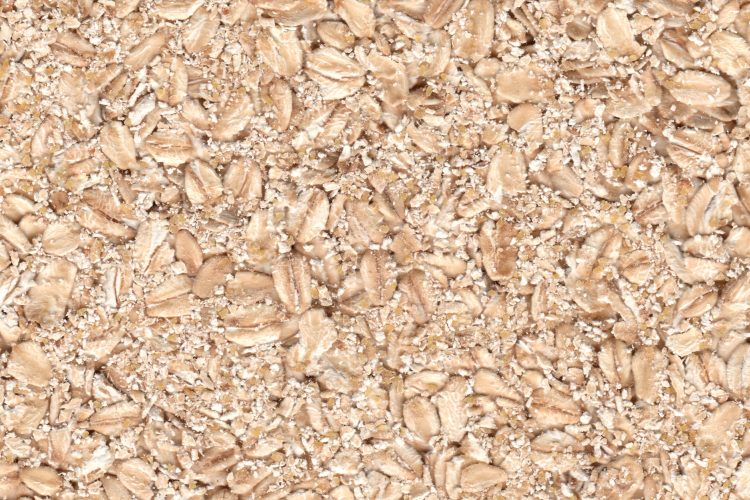Why eat fruits and vegetables when you can get all the nutrients you need in a pill? Wouldn’t it be less work to drink Ensure and take some capsules filled with all the vitamins and minerals you need to thrive?
Unfortunately, it doesn’t work like that. Food is complicated.
Start simple: What nutrients are in an apple?
An individual apple has thousands of chemicals, and although we might try to extract and study one of those chemicals, this will never answer the question of whether or not an apple, as a whole, is healthy for us to consume.
If we could construct a perfect study and determine the exact properties of just one of these chemicals, such as Vitamin C, this would still fail to describe an apple. We have no idea how the presence of those other thousands of chemicals alters the behavior of Vitamin C, and to what extent each of those chemicals further interact with one another. We would have only studied Vitamic C in a vacuum, not in the environment of an apple.
Even if we could describe Vitamin C and the precise way it interacted with the countless other chemicals in your average apple, that still wouldn’t accurately predict the way it behaved when those ratios changed. And they do change. The presence of vitamin C varies by as much as 200% between normal, healthy apples, as does each of the other chemicals. A perfect study of Vitamin C in one apple, along with all of its interactions, would only be a perfect study of that particular apple.
Worse still, even if we managed to predict that complex interactions of every single chemical in every single apple (a mathematical impossibility in the foreseeable future), we’d only be describing it for a given model of the human digestive track, and these models change daily as the science advances. Perhaps most horrifyingly of all, digestive systems vary astronomically between individually because genetics and digestive bacteria.
The complexity of the chemicals in just one apple and the countless interactions they have with one another in our body makes it mathematically unfeasible to create an image of the apple from its constituent parts. So is it hopeless?
Don’t watch butterflies to track the weather!
In Jurassic Park, Ian Malcolm famously discussed the concept of “emergent phenomena.” When you study a sufficiently complex system, chaos theory states that the outcomes become effectively unpredictable based on individual, small events—instead, they emerge.
This is the reason why the weather service can’t accurately predict the weather more than a few days in advance, and certainly can’t hope to predict the local weather a month from now. Weather is an example of a highly complex system, and seemingly minuscule changes have consequences that can’t be predicted. The heat from a parking lot, the cloud cover over a particular lake, or even the proverbial butterfly’s wing dramatically alter the long-term outcome.
The field of nutrition is much like this. They’re fixated on the small details, not realizing that the small details relate in such a fantastically complex way that they’re simply not comparable.
Most nutritional research reported in the media is about as predictive of your health outcomes as a meteorologist tracking a particular butterfly is of the weather in Kenya next month. When some study or another reports on Vitamin E and recommends you eat supplements filled with it, it’s no better than a meteorologist predicting a monsoon because their particular butterfly turned left. No better at all.
So what’s the big picture?
There’s another school of thought, however. Researchers like T. Colin Campbell, who famously wrote The China Study, simply compared populations that eat certain diets with similar populations that eat different diets.
They’ll look at one population which eats cheese, and one that doesn’t, and they’ll find that the first population has heart disease and the second one has 90% less. Based on this, they’ll recommend people don’t eat as much cheese. It sounds simple, and it is. It’s a bit like saying “it rains a lot in Seattle, so you should carry an umbrella.”
Who are you going to listen to? The guy who recommends the umbrella because it rains all the time? Or the one who’s still standing outside in the storm because the butterfly tells him it will stop any second?
Butterfly trackers frown on large, population studies because they insist this sort of research doesn’t sufficiently explain how food works. This is absolutely true. But the study of how food works should be fundamentally a different pursuit than the study of what food to eat. We know this intuitive in other parts of our life: I did not recite my wedding vows in terms of the chemicals and neurotransmitters that create the sensation of love, and any such explanation would have been inherently incomplete.
So what do we do?
These large societal research studies don’t explain the precise mechanisms by which they work. However, they do give you a pretty good idea what foods to eat and which ones to avoid, which is what most of us care about. The findings of researchers in many different countries throughout the last century have looked pretty similar. I’ll let T. Colin Campbell explain what, over and over again, is found to be the ideal human diet:
1[ Anderson, P. W. (1972). More is Different. Science, 177(4047), 393-396. doi:10.1126/science.177.4047.393]
2[ Campbell, T. C., PhD. (2013). Whole. Dallas, TX: BenBella Books.]

This is great, Alex! Well done.